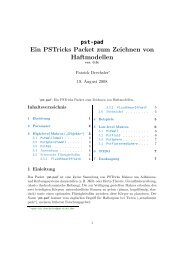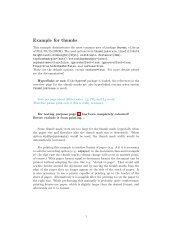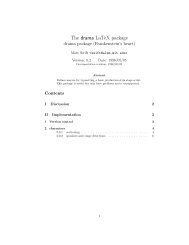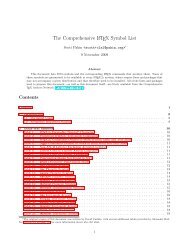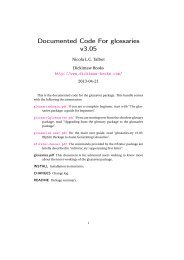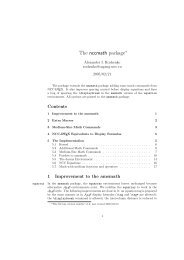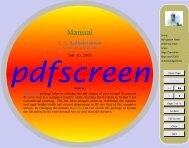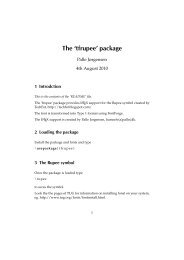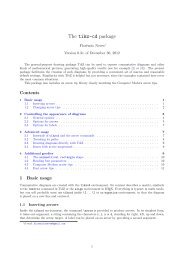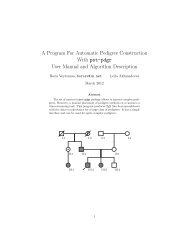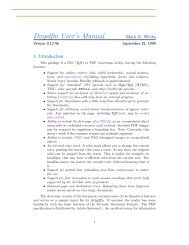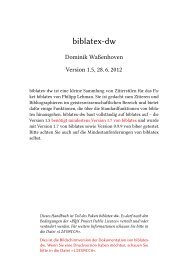ntheorem.pdf. - Mirrors.med.harvard.edu
ntheorem.pdf. - Mirrors.med.harvard.edu
ntheorem.pdf. - Mirrors.med.harvard.edu
You also want an ePaper? Increase the reach of your titles
YUMPU automatically turns print PDFs into web optimized ePapers that Google loves.
• Document option fleqn is problematic: fleqn handles equations not<br />
by $$ but by lists (check what happens for<br />
\begin{theorem} \[ displaymath \] \end{theorem}<br />
in standard L ATEX: The displaymath is not set in an own line). Also,<br />
for long formulas, the equation number and the endmark are smashed<br />
into the formula at the right text margin.<br />
• Naturally, <strong>ntheorem</strong>.sty will not work correctly in combination with<br />
other styles which change the handling of<br />
1. theorem-like environments, or<br />
2. environments concerned with the handling of endmarks, e.g.<br />
\[...\], eqnarray, etc.<br />
• <strong>ntheorem</strong>.sty is compatible with Frank Mittelbach’s theorem.sty,<br />
which is the most widespread style for setting theorems.<br />
It cannot be used with theorem.sty, but it can be used instead of it.<br />
6.2 Known “Bugs” and Problems<br />
• Ending a theorem directly after the text, e.g.<br />
\begin{Theorem} text\end{Theorem}<br />
suppresses the endmark:<br />
15 Theorem:<br />
text<br />
Therefore a space or a newline should be inserted before \end{...}.<br />
• With theoremstyle break, if the linebreak would cause ugly linebreaking<br />
in the following text, it is suppressed.<br />
6.3 Open Questions<br />
• For equations, we decided to put the endmark after the equation<br />
number, which is vertically centered. Currently, we do not know, how<br />
to get the equation number centered and the endmark at the bottom<br />
(one has to know the internal height of the math material).<br />
31<br />
♦



